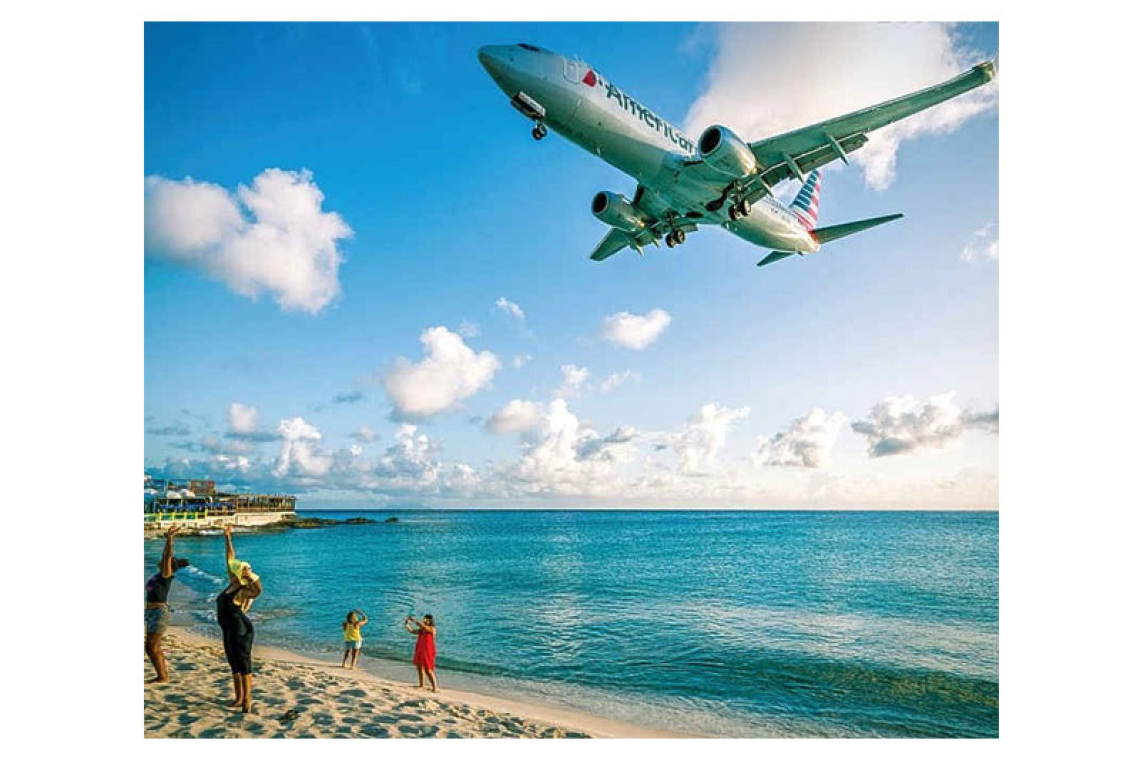An aircraft about to land at Princess Juliana International Airport.
PHILIPSBURG--In an analysis of occupied room nights (ORN) of recent high seasons, the St. Maarten Hospitality and Trade Association (SHTA) analysed this year’s high season yields comparable to last winter.
Despite the ending of the worldwide pandemic and travel restrictions, only 6% growth took place in occupied room nights year over year this season to date. In comparison to the winter season pre-Hurricane Irma, St. Maarten hosted 23% fewer high season room nights compared to the winter season of 2016-2017, despite having 84% of the 2016-2017 pre-room count currently available.
Occupancy figures are derived from SHTA hotels and timeshare properties over November, December, January, February, in comparison to those of the 2016-2017, 2019-2020 and 2021-2022 winter seasons. “Our statistics unfortunately currently lack airport data, sharing economy rentals from sites like Airbnb, VRBO and the like, and the French side,” SHTA said.
The high season analysis comes after earlier indicators that St. Maarten’s occupancy needs improvement. Over 2022, St. Maarten hotels saw 64% occupancy, whereas Curaçao saw 71% and Aruba 75% of its hotel beds filled. Even more worrisome, December occupancy was 2% under that of St. Maarten in 2021. “On a more positive note, occupancy over February 2023 was 7% higher than the prior year (81% vs 74% in 2022). However, we cannot discount the positive rebound from [coronavirus variant – Ed.] Omicron when we were open and other destinations weren’t, coupled with the pent-up demand from travellers,” SHTA stated. “We also have no way to track how that situation impacted our occupancy over the 2021-2022 season.”
According to the association, many hoteliers are concerned about the lack of pick-up in tourism, with a traditionally lower summer occupancy ahead. As a simple remedy, SHTA urges government to expand its destination tourism promotion. The association assesses that every invested tourism dollar would return itself fivefold to government coffers in the short term via airport fees, lodging, car rental, timeshare and turnover taxes and other sources of income. Tourism spending is currently under 40% of French St. Martin, Aruba and Curaçao when measured on a per-room basis.
“The plus side is that we as St. Maarten don’t need investment in development to improve our economy, we only have to improve our collective business case through adequate and targeted promotion. In other words, we have an amazing product with ample availability, but we aren’t marketing it to the right consumers,” stated SHTA.
To improve summer occupancy, the St. Maarten Tourism Bureau (STB) is reallocating some of the available funds for ad spend toward a digital summer campaign, in an effort to improve occupancy. “SHTA supports this course, but hopes for government to systemically increase STB funding to further energise the tourism engine of the economy, improving both public and private sector income, while ensuring that any gains in market share are not lost by future marketing absences,” stated SHTA.







